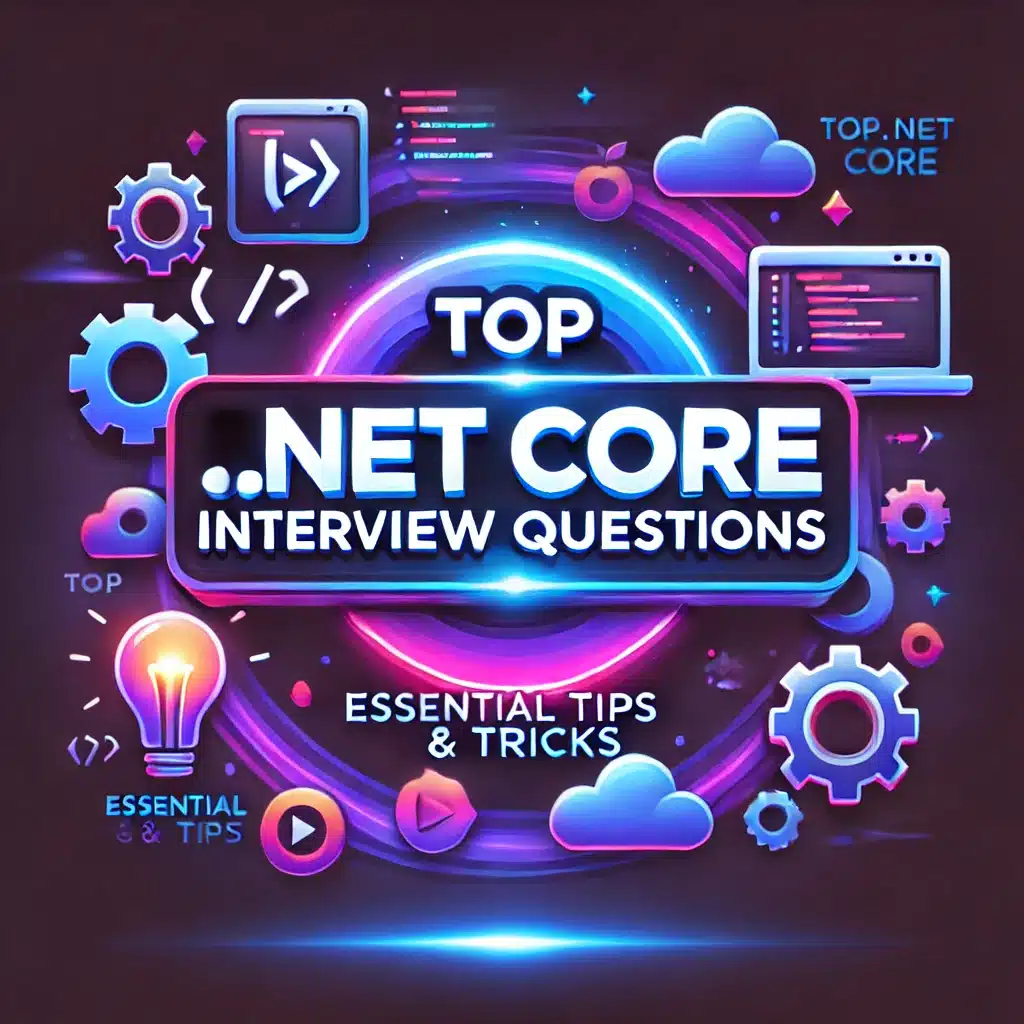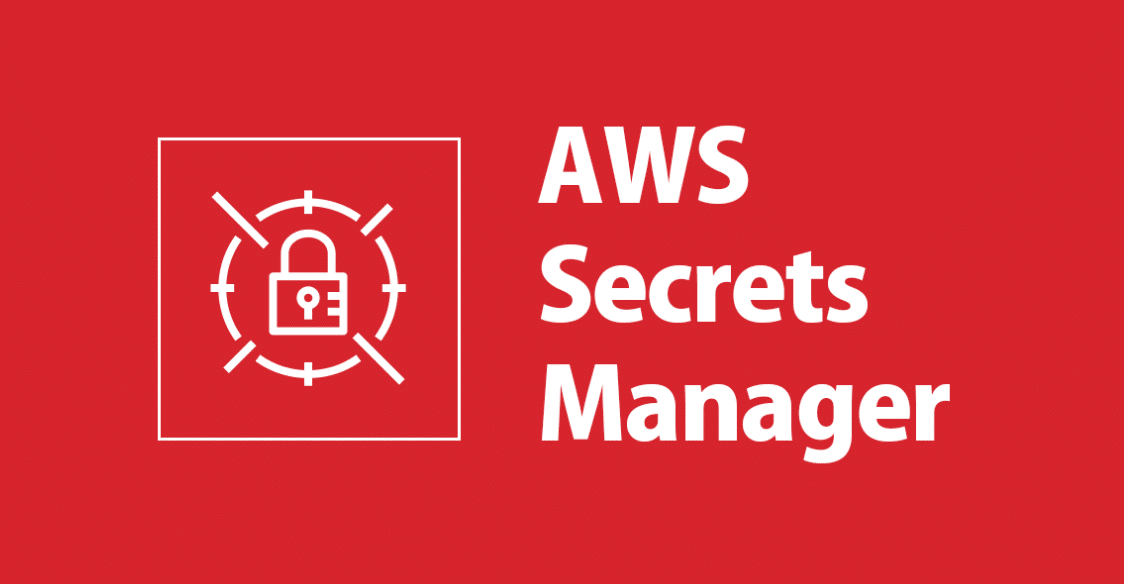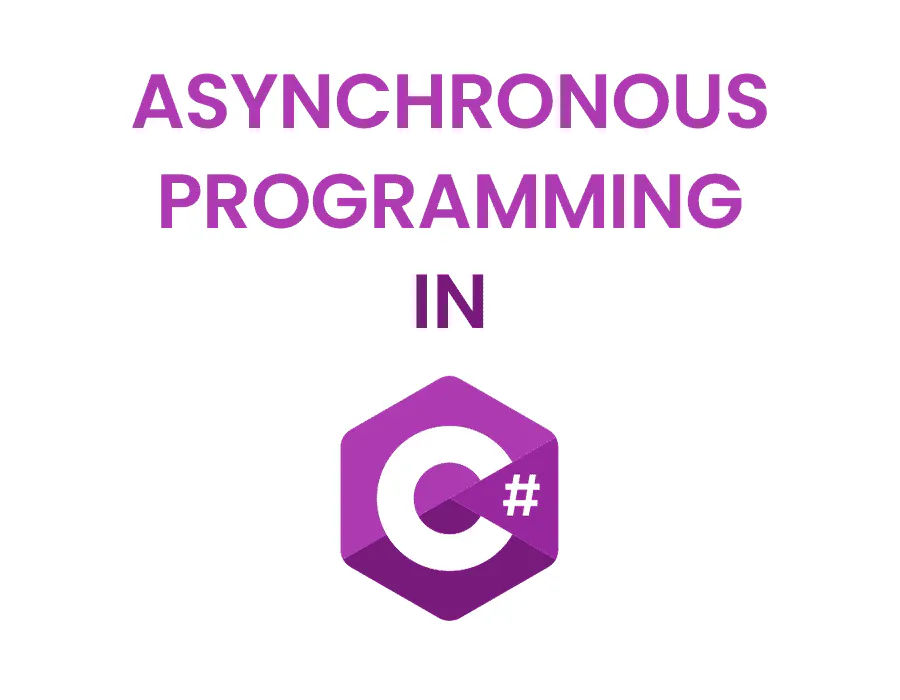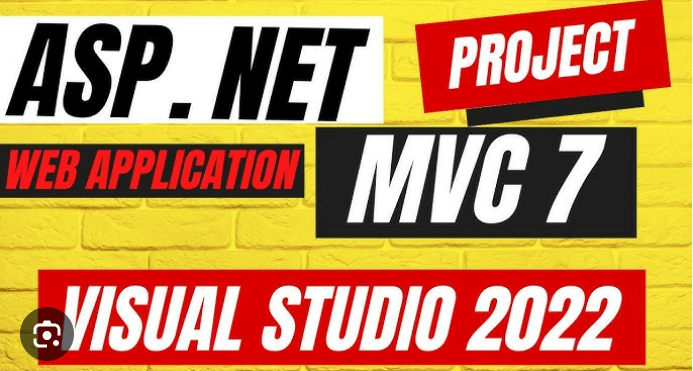Are you gearing up for a .NET Core interview and feeling the pressure to ace those tricky questions? Look no further! Our comprehensive guide is here to illuminate every corner of your .NET Core Interview Questions and help you shine in your upcoming interview.
Welcome to the Ultimate Guide on .NET Core Interview Questions!
In the ever-evolving world of software development, .NET Core has emerged as a powerful framework that drives robust, scalable, and cross-platform applications. Whether you’re a seasoned developer or just stepping into the .NET Core ecosystem, mastering the interview questions can be your key to unlocking new career opportunities.
Here, we’ve curated a collection of the most frequently asked .NET Core interview questions and their answers, designed to not only prepare you for your interview but also deepen your understanding of .NET Core’s core principles. From foundational concepts to advanced techniques, our guide covers it all.
What You Will Discover
- In-Depth Questions & Answers: Tackle both fundamental and complex questions that interviewers love to ask.
- Expert Insights: Gain insider tips and best practices from industry professionals.
- Practical Examples: Explore real-world scenarios to see how theoretical concepts are applied.
- Latest Trends: Stay updated with the newest features and advancements in .NET Core.
Get Ready to Impress!
Our aim is to empower you with the knowledge and confidence you need to excel. Dive in, absorb the insights, and step into your interview with the assurance that you’re well-prepared. Whether you’re eyeing a position as a .NET Core Developer, Software Engineer, or Architect, this guide will set you on the path to success.
Ready to master the art of .NET Core interviews? Let’s get started!
Q1 – From a developer’s point of view, difference between the dotnet framework and dotnet core?
Ans- The key differences between .NET Framework and .NET Core are centered around platform compatibility, performance, and deployment flexibility:
Cross-Platform Compatibility: .NET Core is cross-platform, running on Windows, Linux, and macOS, while .NET Framework is limited to Windows.
Performance: .NET Core is optimized for high performance and scalability, making it ideal for modern, cloud-native applications. .NET Framework, while stable, is generally slower and more resource-intensive.
Deployment Flexibility: .NET Core allows for flexible deployment options, including Docker containers and self-contained applications, while .NET Framework is tightly coupled with Windows and IIS.
Open Source: .NET Core is fully open source with strong community support, leading to faster updates and innovation. .NET Framework is primarily Microsoft-driven.
For developers building new applications, especially for the cloud or cross-platform environments, .NET Core is the better choice.
Q2- What is a partialView class?
Ans- A partial class in C# allows you to split the definition of a class across multiple files. This is especially useful in large projects, where separating the class logic into different files can enhance code organization and maintainability.
Key Points about Partial Class:
- Definition: A partial class in C# lets you break a class into multiple files, allowing different developers to work on the same class simultaneously without merge conflicts.
- Usage: Commonly used in auto-generated code scenarios, like when using frameworks that generate part of the code (e.g., Windows Forms, Entity Framework).
- Benefits: Enhances code maintainability, improves collaboration among team members, and keeps large classes organized.
By using partial class in C#, developers can manage large classes more efficiently, leading to cleaner, more maintainable code in .NET applications.
Q3- Write a LINQ query to join 2 tables.
Also Read about this important topic Asynchronous Programming
Ans- Assume you have two classes: Customer and Order. You want to join these two tables based on the CustomerId
var query = from customer in customers
join order in orders on customer.CustomerId equals order.CustomerId
select new
{
CustomerName = customer.Name,
OrderId = order.OrderId,
OrderDate = order.OrderDate
};
foreach (var result in query)
{
Console.WriteLine($"Customer: {result.CustomerName}, Order ID: {result.OrderId}, Order Date: {result.OrderDate}");
}
es based on the CustomerIdvar query = from customer in customers
join order in orders on customer.CustomerId equals order.CustomerId
select new
{
CustomerName = customer.Name,
OrderId = order.OrderId,
OrderDate = order.OrderDate
};
foreach (var result in query)
{
Console.WriteLine($"Customer: {result.CustomerName}, Order ID: {result.OrderId}, Order Date: {result.OrderDate}");
}
//Explanation:
//customers and orders are the two data sources.
//The join clause joins customers and orders based on the CustomerId.
//The select statement projects the result into an anonymous type containing the CustomerName, OrderId, and OrderDate.
Q4- What is Dependency Injection? In which case we use Transient, singleton, and AddScoped?
Ans- Dependency Injection (DI) is a design pattern in .NET Core that allows for better modularity, testability, and maintainability by injecting dependencies into a class rather than the class creating them itself. This promotes loose coupling and enhances the flexibility of the application.
Key DI Lifetimes:
Transient: Services are created each time they are requested. Use
AddTransientfor lightweight, stateless services where a new instance is needed for each operation.
Use Case: Logging Services, Helper classes for one-time operations.
Singleton: A single instance of the service is created and shared throughout the application’s lifetime. Use
AddSingletonfor services that maintain state or are expensive to create.
To inject Singleton, must need to add in
services.AddSingleton<IMyService, MyService>();
Use Case: Configuration settings for the entire application and Application-wide caching mechanisms.
Scoped: Services are created once per request within the scope. Use
AddScopedfor services that require a new instance for each web request, useful in scenarios like managing database contexts.
Use Case: Database contexts in web applications (Entity Framework DbContext) and Caching services for the duration of a single request.
Read more on this article on Medium
Q5- How to register middleware and Dependency injection in dotnet core?
Ans- Middleware is a piece of code pipeline that can sit between server and client like Authentication, authorizations. Middleware can be built-in as part of the .NET Core framework, added via NuGet packages, or can be custom middleware.
To register middleware in a .NET Core application, you use the Configure method in the Startup class. Middleware components are added to the HTTP request pipeline using methods like UseRouting, UseAuthentication, and UseEndpoints.
public void Configure(IApplicationBuilder app, IWebHostEnvironment env)
{
if (env.IsDevelopment())
{
app.UseDeveloperExceptionPage();
}
app.UseRouting();
app.UseAuthentication();
app.UseAuthorization();
app.UseEndpoints(endpoints =>
{
endpoints.MapControllers();
});
}
Q6- What is the difference between EC2 and EBS in the AWS cloud?
Ans- EC2 is the virtual machine or server where you run your applications whereas EBS is the storage attached to that virtual machine, used to store data persistently.
EC2 is a service that provides scalable virtual servers (instances) in the cloud. These instances allow you to run applications, host websites, and perform other computing tasks whereas EBS is a block storage service designed to be used with EC2 instances. It provides persistent storage that remains available even when the EC2 instance is stopped or terminated.
Also, Read about AWS SECRET MANAGER
Q7 – What is Run Time Polymorphism? Explain with an example
Ans- Run Time Polymorphism in C# is a fundamental concept in object-oriented programming that allows a method to behave differently based on the object that invokes it, even when the method is called using a reference of the base class. This is also known as dynamic polymorphism or method overriding.
Key Concepts:
- Inheritance: Run time polymorphism typically involves a base class and one or more derived classes.
- Method Overriding: The derived class overrides a method in the base class using the
overridekeyword. The base class method must be marked with thevirtualkeyword.
public class Animal
{
public virtual void Sound()
{
Console.WriteLine("Animal makes a sound");
}
}
public class Dog : Animal
{
public override void Sound()
{
Console.WriteLine("Dog barks");
}
}
public class Cat : Animal
{
public override void Sound()
{
Console.WriteLine("Cat meows");
}
}
class Program
{
static void Main()
{
Animal myAnimal = new Dog(); // Base class reference, derived class object
myAnimal.Sound(); // Output: Dog barks
myAnimal = new Cat(); // Base class reference, derived class object
myAnimal.Sound(); // Output: Cat meows
}
}
Q8 – What is Lambda in AWS? What are Lambda’s advantages and disadvantages?
Ans- Lambda in AWS is a serverless service that executes your code through some events. In Lambda, we don’t need to provision or maintain any server. Also, the autoscaling feature is enabled in lambda and it will charge based on the usage only.
Disadvantages of Lambda: Lambda function has a maximum time limit of 15 minutes and a memory limit of 10 GB.
If your application will take more than 15 minutes and you want the features like lambda only then you can use FARGATE which is also serverless.
Q9 – What is IEnumerable and IQueryable?
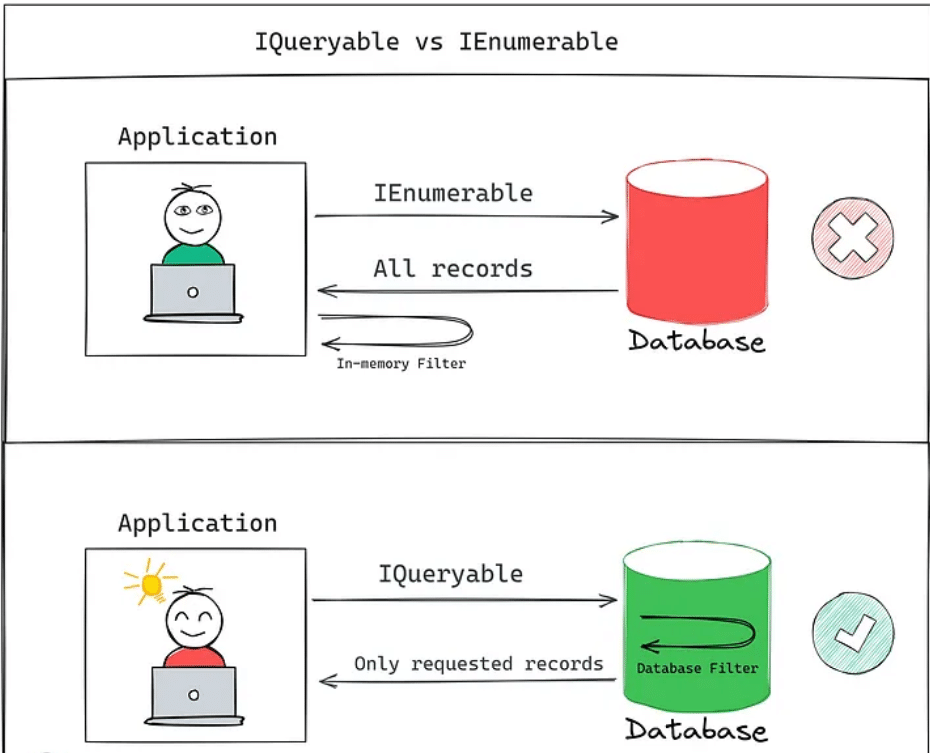
Ans – As seen in the above picture, IEnumerable is an interface in the System.Collections namesapce. Queries using IEnumerable execute on the client side, it means it first query the data from database and load the data in memory and do the filter operation on the in memory database.
IEnumerable<int> numbers = new List<int> { 1, 2, 3, 4, 5 };
var evenNumbers = numbers.Where(n => n % 2 == 0);
Whereas, IQueryable in dotnet is a interface from System.Linq, and IQueryable excute and filter the data in the server side only. IQueryabale in dotnet is good for large dataset or remote data sources, as it reduce the amount of data transfer over the network.
Q10 – What is Finalize Keyword in C#?
Ans- The ‘Finalize’ method allows an object to release the unamanaged resources which includes file handles, database connection etc, before the object is flushed by the garbage collector. It is a way to cleanupp that are unnecessary for unmanaged code which are not handled automatically by garbage collector.
But instead of using Finalize directly, recommendation is to use ‘IDisposable’ pattern to manage resources.
Q11- What is Extension method in C#?
Ans – Extension method allows you to add new method to existing types without creating a new derived type, neither recompiling or modifying the original source. Extension method are always static but they are called as if they were instance method
Q12 – What are HTTP verbs ? What is difference between PUT and PATCH?
Ans- HTTP verbs are also known as HTTP method. HTTP verbs define what kind of operation should be performed on the resource specified in the request. Most used HTTP verbs are :
GET: Fetch data from server.
POST: Insert some new data
PUT: Update or replace a resource.
PATCH: Partially modification can be done using PATCH.
DELETE: Remove resource from Server.
Q13- Clustered vs Non Clustered Index?
Ans- Clustered Index: A clustered index determines the physical order of data rows in a table. It is the index that arranges the actual data rows in the table based on the index key.
Key Points:
- Single Clustered Index: Each table can have only one clustered index because the data rows can only be physically sorted in one order.
- Primary Key: By default, the primary key constraint creates a clustered index on the primary key column(s) if no other clustered index exists.
Non-Clustered Index
Definition: A non-clustered index is a separate structure from the data rows in the table. It contains pointers to the actual data rows in the table.Key Points:
- Multiple Non-Clustered Indexes: A table can have multiple non-clustered indexes, allowing different columns to be indexed in various ways.
- Index Structure: Non-clustered indexes store the index key and a pointer (often a row identifier or a clustered index key) to the actual data row in the table. The data itself remains in its original physical order.
Keywords:
.NET Core Interview Questions
.NET Core Interview Tips
.NET Core Interview Preparation
.NET Core Developer Questions
.NET Core Interview Answers
.NET Core Interview Guide
.NET Core Technical Questions
.NET Core Coding Interview
.NET Core Interview Strategies
.NET Core Common Questions
.NET Core Interview Examples
.NET Core Interview Preparation Guide
.NET Core Developer Interview Prep
Advanced .NET Core Interview Questions
.NET Core Interview Questions and Answers
